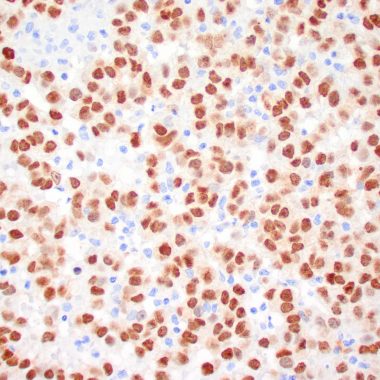MiTF is a basic helix-loop-helix-leucin zipper (b-HLH-ZIP) transcription factor implicated in pigmentation, mast cells and bone development. The mutation of Mi causes Waardenburg syndrome type II in humans. In mice, a profound loss of pigmented cells in the skin eye and inner ear results, as well as osteopetrosis and defects in natural killer and mast cells. There are two known isoforms of Mi differing by 66 amino acids at the NH2 terminus. Shorter forms are expressed in melanocytes and run as two bands at 52kDa and 56kDa, while the longer Mi form runs as a cluster of bands at 60-70kDa in osteoclasts and in B16 melanoma cells (but not other melanoma cell lines), as well as mast cells and heart. Clone D5 cocktail is especially designed for sensitive detection of Mi protein. C5 reacts with both melanocytic and non-melanocytic isoforms of Mi.

